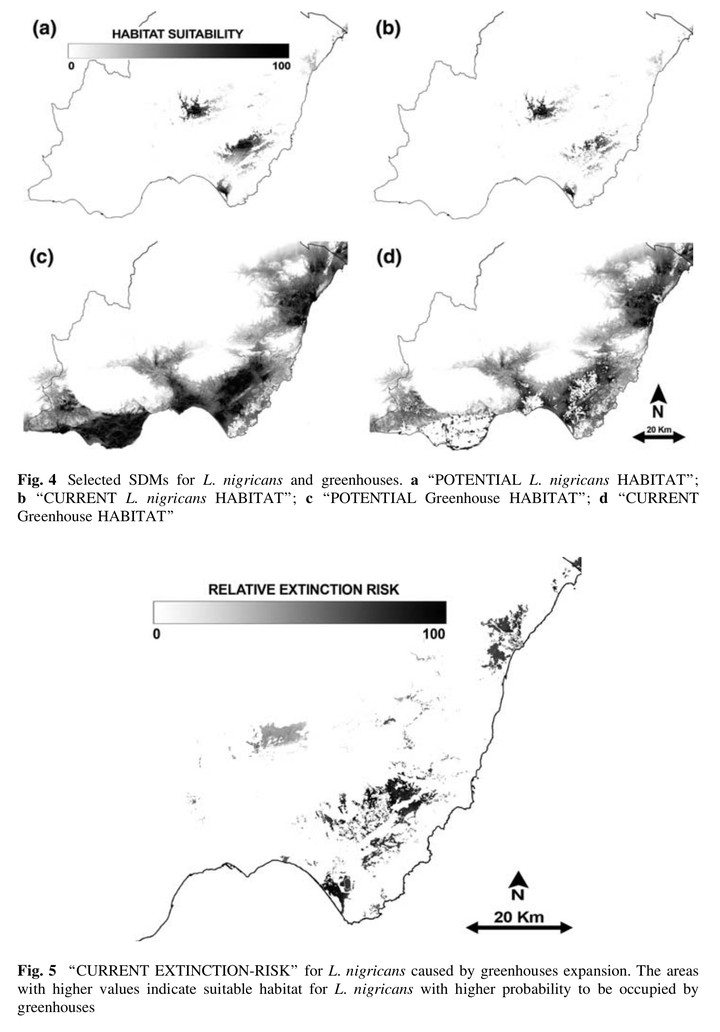Assessing extinction-risk of endangered plants using species distribution models: a case study of habitat depletion caused by the spread of greenhouses
 Image credit: Blas M. Benito
Image credit: Blas M. Benito
Abstract
Species distribution models (SDMs) are useful tools for investigating rare and endangered species as well as the environmental variables affecting them. In this paper, we propose the application of SDMs to assess the extinction-risk of plant species in relation to the spread of greenhouses in a Mediterranean landscape, where habitat depletion is one of the main causes of biodiversity loss. For this purpose, presence records of the model species (Linaria nigricans, a endemic and threatened species) and the greenhouses, a dataset of environmental variables, and different only presence-based modelling algorithms (Bioclim, Domain, GARP, MaxEnt and ENFA) were used to build SDMs for L. nigricans as well as for greenhouses. To evaluate the models a modified approach of the area-under-curve ROC was applied. Combining the most accurate models, we generated an extinction-risk model of L. nigricans populations, which enabled us to assess the sustainability of the most threatened populations. Our results show that is possible to model greenhouses spreading as a “biological invasion”. The procedure explained and used in this work is quite novel, and offers an objective spatial criterion intended for the management of natural resources and for the conservation of the biodiversity in areas threatened by habitat depletion processes as particular as greenhouses expansion.